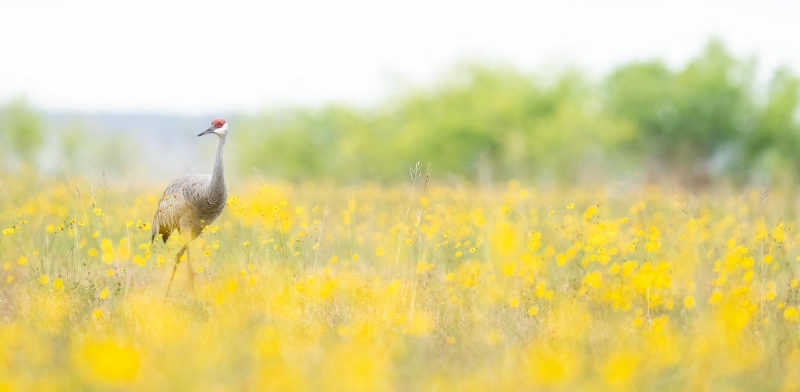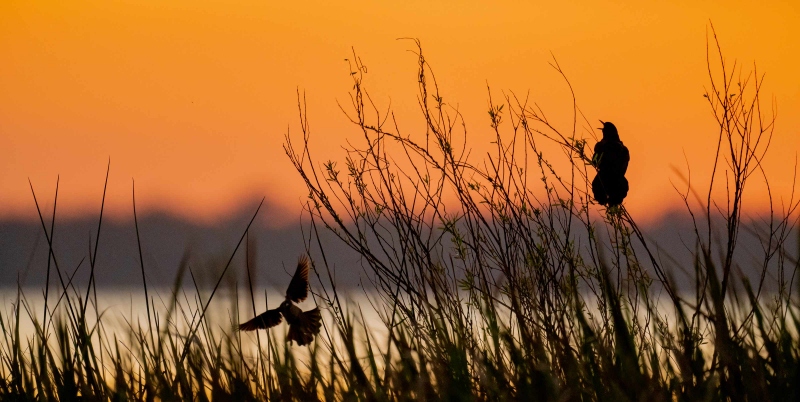Be Honest!
Which of today’s three featured pano-crops is the worst of the lot? Why don’t you like it?
What’s Up?
The three amigos met for breakfast in the Lakefront Hotel at 6:30am. We met in the lobby at 8:00am, packed the car, and then headed south and east on the Seward Highway and then south and west on the Sterling Highway. Road conditions were great all the way through, and the scenery was spectacular. We stopped to shoot a variety of scenics along the way. Ninety minutes north of Homer, we stopped to photograph a lovely lady moose. (Bob Eastman thought that it was likely a male).
I loved and am very proud of the Heermann’s Gull/Brown Pelican juxtaposition image in yesterday’s blog post. No complaints from me.
Today is Monday 20 February 2023, Day One of the first Homer Bald Eagle IPT. Weather permitting, we will be heading across Kachemak Bay this morning for some unforgettable eagle photography. The great news is that there is a ton of snow on the ground.
If you have some cold weather gear and are free from about 23 or 24 February through March 3 or 4 and would like to join the second Homer IPT, please get in touch via e-mail ASAP as I am practically giving away the second IPT for free.
This blog post took about 90 minutes to prepare and makes three hundred twenty-seven days in a row with a new educational post written just for you. Wherever you are and whatever you are doing, I hope that you too have a great day.
Please, please, pretty please remember to use m B&H or Bedford’s affiliate programs for all your new gear purchases. If you use B&H, please be sure to click on any B&H link in the blog to start your search. Or simply start with this link. There is always the option of e-mailing me for gear advice and for the correct links.
The plan is to continue to post every day until the streak reaches one year and one day and then begin posting every other day.
Please remember to use the B&H and Amazon links that are found on most blog pages and to use the BIRDSASART discount code at checkout when purchasing your new gear from Bedfords to get 3% back on your credit card and enjoy free second-day air FedEx. Please, also, consider joining a BAA IPT. You will be amazed at how much you will learn!
You can find some great photo accessories (and necessities, like surf booties!) on Amazon by clicking on the Stuff tab on the orange/yellow menu bar above. On a related note, it would be extremely helpful if blog-folks who, like me, spend too much money on Amazon, would get in the habit of clicking on the Amazon logo link on the right side of each blog post when they shop online. As you might expect, doing so will not cost you a single penny, but would be appreciated tremendously by yours truly. And doing so, works seamlessly with your Amazon Prime account.
Please remember that if an item — a Delkin flash card, or a tripod head — for example, that is available from B&H and/or Bedfords, is also available in the BAA Online Store, it would be great, and greatly appreciated, if you would opt to purchase from us. We will match any price. Please remember also to use my B&H affiliate links or to earn 3% cash back at Bedfords by using the BIRDSASART discount code at checkout for your major gear purchases. Doing either often earns you free guides and/or discounts. And always earns my great appreciation.
|
|
|
This image was created on 6 February 2023 down by the lake near my home at ILE. Seat I used the handheld Sony FE 400mm f/2.8 GM OSS lens and The One, the Sony Alpha 1 Mirrorless Digital Camera). The exposure was determined via Zebra technology with ISO on the Thumb Dial. ISO 800. 1/800 sec. at f/8 (stopped down 3-stops) in Manual mode. When evaluated in RawDigger, the raw file brightness was determined to be perfect (ho hum). AWB at 7:46:05am on a somewhat hazy, sunny morning. Manual focus with focus peeking. Be sure to click on the image to enjoy a high-res version. Image #1: Sandhill Crane in tickseed blossoms |
Why Manual Focus?
The crane was foraging amongst the tickseed blossoms, occasionally leaning down to grab a mole cricket or a juicy tuber.
The question of the day is, Why did I go to manual focus?
To help you get to the right answer, in part, ask yourself, What is the total depth of field when using a full frame camera on a 400mm lens at f/2.8 with the subject 45.36 meters away?
Why Pano-Crops?
Pano-crops are often used to eliminate an expanse of boring background such as the white sky in the first image, or the featureless orange sky in the third image. In image #2, a vertical pano crop helped to eliminate some of the clutter in the background.
|
|
|
This image was also created on 6 February 2023 down by the lake near my home at ILE. Seated in the front seat of may SUV, I used BLUBB-supported Sony FE 600mm f/4 GM OSS lens, the Sony FE 2.0x Teleconverter, and The One, the Sony Alpha 1 Mirrorless Digital Camera). The exposure was determined via Zebra technology with ISO on the thumb dial. ISO 800. 1/800 sec. at f/8 (wide open) in Manual mode. When evaluated in RawDigger, the raw file brightness was determined to be one full stop under. AWB at 7:46:05am on a mostly sunny morning. Tracking: Expand Spot/AF-C with Bird-Eye/Face Detection performed perfectly. Be sure to click on the image to enjoy a high-res version. Image #2: Great Blue Heron in marsh |
BLUBB Reminder
If you are in the front seat of your vehicle, working with a long lens off the BLUBB-, and your telephoto lens has a Direct Manual (DMF) switch, be sure to set that switch to OFF so that the BLUBB does not screw up accurate focus.
|
|
|
This image was also created on 6 February 2023 down by the lake near my home at ILE I used the no-longer available Induro GIT 304L tripod/Levered-Clamp FlexShooter Pro-mounted Sony FE 600mm f/4 GM OSS lens, the Sony FE 2.0x Teleconverter, and The One, the Sony Alpha 1 Mirrorless Digital Camera). The exposure was determined via Zebra technology with ISO on the thumb dial. ISO 6400. 1/1000 sec. at f/8 (wide open) in Manual mode. When evaluated in RawDigger, the raw file brightness was determined to be 1 2/3 stops too dark. AWB at 6:10:02pm just after sunset. Tracking: Expand Spot/AF-C with Bird-Eye/Face Detection performed perfectly. Click on the image to enjoy the high-res version. Be sure to click on the image to enjoy a high-res version. Image #3: Boat-tailed Grackle in marsh at sunset |
The 2022-2023 ILE Wading Bird Roost. Not!
For the past few years, more than 100 Cattle Egrets, dozens of Snowy and Great Egrets, Little Blue and Tricolored Herons, and Glossy Ibises roosted in the cattails along the edge of the lake at Indian Lake Estates. There have been far fewer birds in the past three months than in previous years. And those that have returned are roosting in the center of the marsh rather than along the edge. As a result, sunset silhouette photography has been spotty at best. I’ve only been down a few times since December, with only a single Glossy Ibis flight silhouette to show for my efforts. I have had some decent chances with Boat-tailed Grackles.
Why So Under-exposed?
As I write here often, “Everybody underexposes colorful sky silhouettes, even me.” Most of the time, I simply do not add enough light. But in this situation — already at ISO 6400 with a somewhat compromised shutter speed (for flight and action) of 1/1000 sec., I chose to seriously underexpose rather than go to a higher ISO. With Topaz DeNoise AI, the final product looks fine to me.
Typos
With all blog posts, feel free to e-mail or to leave a comment regarding any typos or errors.
















All three images are okay. I think image #2 Great Blue Heron in marsh is the best because it is closer and good light. Image #1 Sandhill Crane in tickseed blossoms is okay but far there away. Image #3 Boat-tailed Grackle in marsh at sunset is kind of okay but yes the problem is sunset lighting.
I am thrilled to learn that you do not dislike all of the images 🙁 In #3, perhaps you missed the display male grackle and the grackle landing with its backlit wings spread. They very much caught my attention 🙂
Now you go and have great day.
a
On #1, perhaps you used manual focus because of the vegetation in front of the crane’s body? I prefer image #1 over the others, with the beautiful blurred vegetation and the color of the blurred blossoms contrasting with the detail and movement of the crane. #2 is my least favorite due to the distance between the head and the detailed feathers/sticks, as there is not one place for the eye to rest. In #3, even though there is distance between the birds, the eye travels more smoothly from bird to vegetation to bird, with a different distant background for each bird.
Thanks for your thoughtful comments, Elle. I agree that #2 is the worst by far. Too much clutter.
with love, artie
Arthur: Can you define “pano crops”?
Hi Scott,
For me, a pano crop is an image that is cropped to be long and skinny, longer and skinnier than the 3X2 or 2X3 images that come out of our camera bodies.
with love, artie
Question #1 DOF was 1.2meters. Not much. Manuel focus better choice.
I asked for the total dof that is actually about twice that. That is more than 6 feet of dof. Therefore, “not much” is totally wrong. I wanted to be sure that the crane was sharp, and it is.
So, why was MF the best choice???
See you soon in Homer.
a
You have to use manual focus or the flowers in the foreground will be in focus, withthe Sandhill will be hopelessly out of focus.
A little wordy and unclear but you are heading in the right direction.
a
Hi Artie,
Here is a typo – packed the car, the car
Thanks and fixed.
a
I don’t dislike images 1 or 2 at all… but, I am not keen on 3. There is noting of real interest to me about this image, and in particular, I dislike the blurred, dark orange-fringed vegetation on the other side of the water. I know DoF renders it so, but this form of ‘artistry’ is not for me!